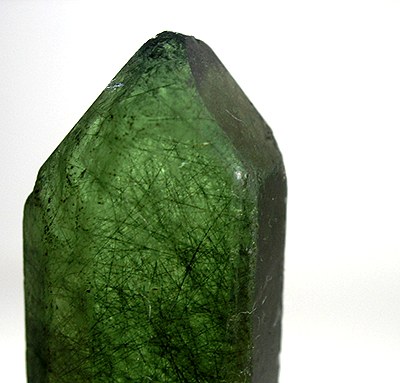The investigation into shale gas continues with an intial assessment of the potential of Britain's geology for shale gas exploitation. A report produced for the Department of Energy and Climate Change estimates that up to half of the UK could have suitable geology. This isn't too much of a surprise, as shale is the most common sedimentary rock and hasn't featured as a strategiec resource for the country in the past.
The resource is there, the question remains whether the economics, energy security and environmental demands can all be made to balance. What do you think?
Wednesday 18 December 2013
Tuesday 17 December 2013
Jade Rabbit finds remarkable rocks
China has sent its first space mission to the moon a rover called Yutu (which translates as "Jade Rabbit") is exploring a part of the Moon called the Mare Imbrium.
Initially I must admit to being sceptical about the scientific purpose of the mission, thinking that it may have just been a prestige project moving Chinese space science forward rather than to discover new ideas about the Moon's geology. However, the rover has landed at the eastern edge of its intended landing area and consequently has ended up in a geologically fascinating part of the moon. It has landed at the edge of an area of lava flows which (as they have few impact craters visible) are thought to be some of the youngest flows on the Moon. The geological kit on the rover should show something about the composition of these lavas. It will be interesting to see what Yutu discovers on its lunar travels.
Friday 13 December 2013
A new source of energy
The American Geophysical Union conference continues to throw up exciting developments in geological research including the possibility of extracting hydrogen from olivine. By speeding up the natural geochemical process of serpentinisation hydrogen can be liberated from olivine crystals giving a potential source of carbon-free energy.
All you need is a pressure cooker (to give a pressure 2,000 times that of the atmosphere and a few hundred degrees of heat) made with some diamonds and some ruby to speed up the reaction and you can make your own hydrogen.
This could make Iceland rich again. Can you work out why?
Penetration twin
A penetration twin is a type of twinned crystal. This is where crystals are joined either as contact twins, where the crystals share one surface, or as a penetration twin,where the crystals grow across each other (as in the crystal shown above).
Twinning is a feature of several minerals and can be a characteristic feature of different types of feldspar (see below). The crystal above is a mineral that you should know; can you identify it?
Twinning is a feature of several minerals and can be a characteristic feature of different types of feldspar (see below). The crystal above is a mineral that you should know; can you identify it?
Thursday 12 December 2013
How big???!!!???
Yellowstone is a big volcano - a really big volcano - so big a volcano we call it a supervolcano. It turns out that Yellowstone is actually much bigger than we had previously thought - 2.5 times bigger according to Professor Bob Smith from the University of Utah. This means that the magma chamber contains a staggering 200-600 cubic kilometres of molten rock.
Seismic surveys of the volcano have reavealed the true extent of the magma source, created by a sub-continental hot spot. Don't worry too much though, supervolcanoes don't erupt very frequently and Yellowstone doesn't look like it will erupt imminently....probably.
You can check out the Yellowstone Volcano Observatory and assess the risk yourself.
Waiting for "The Big One"
Los Angeles will be struck by a devastating earthquake.... soon. We don't know when but we do know that it will happen. By recording the earthquakes along the San Andreas Fault for nealry the last 200 years it is very apparent that through the 20th century the fault hasn't moved much comapred to the frequent earthquakes along the fault during the 19th Century. Contrary to what many people would think, geologists know that this is a "bad thing" because if the fault is locked, energy is being built up in the fault so that when it moves it will move a lot.
At the American Geophysical Union conference in San Fransisco, geoscientists from the US Geological Survey have been posing the question "is LA ready for a megaquake?"
Read through the article, do you think that they can cope with a shock on the scale predicted?
Sunday 1 December 2013
Cow dung bomb
There are some words in geology that graphically describe features we see in the rock, but few are quite as illustrative as cow dung bomb (sometimes known as a cow pat bomb). It is a type of volcanic bomb - igneous rock ejected from a volcanic eruption but t does have an unusual form resembling .... well you can guess. Most volcanic bombs cool in the air, creating a distinctive aerodynamic shape (see below). Cow dung bombs are more liquid and actually land still largely molten, giving them their distinctive shape.
Where do you think we could find cow dung bombs?
Where do you think we could find cow dung bombs?
Subscribe to:
Posts (Atom)








